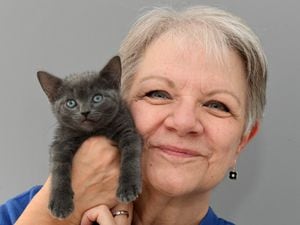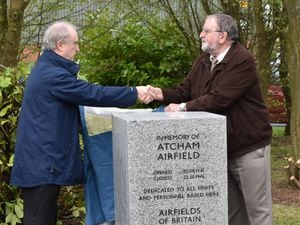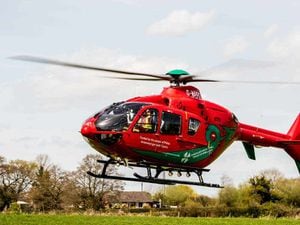Aviation pioneer ahead of his time
Over 50 years ago, Market Drayton aviation pioneer Arthur Phillips' magnificent masterpiece made its final landing, as the surviving relics of his ingenuity were handed over to the famous Shuttleworth Collection.

And you can see them there still, on public display in a hangar, a reminder of his work in developing a flying machine which combined elements of helicopter and aircraft.
Our thanks go to Ciara Harper, of the Shuttleworth Trust, who popped along to take some photos for us of the exhibit in the collection at Old Warden Aerodrome at Biggleswade.
The display board tells the story of the "British Matchless Flying Machine" invented by Phillips, an engineer and cycle builder.
"The exhibit, dating from about 1910, is the centre section of a 12ft span scale model biplane built to prove the design," it says.
Power came from a Douglas motorcycle engine, driving contra-rotating pairs of propellers, which worked in the vertical, horizontal, or any intermediate plane.
"The principle of convertibility from vertical to forward flight and exerting directional control by employing controllable pitch propellers was a laudable one, but way ahead of its time, and the execution lacked the necessary sophistication remotely to succeed. Tests were allegedly carried out in a field near Market Drayton using remote cable control, but in reality Phillips' ingenious device was a non-starter," says the display board.
It is striking how similar the idea is to a modern American machine, the Boeing V-22 Osprey, which has tilting rotors allowing it to combine the vertical performance of a helicopter with the speed and range of a fixed-wing aircraft.
"Arthur Phillips died in 1953 at the age of 80 and the machine was presented to the collection by his daughter, Mrs T. Hodson."
We know that the flying machine had already been presented to the Shuttleworth Collection by September 1966, as a Newport and Market Drayton Advertiser story from that time said it had been restored "and is viewed by the public at the Shuttleworth Veteran Aeroplane Society."
That story told how among those attending the Majestic Cinema in Bridgnorth to see the movie "Those Magnificent Men in their Flying Machines" were Mr and Mrs Thomas Hodson, of Orville, Edgmond – the house was no doubt named after Orville Wright – the daughter and son-in-law of Phillips.
"Mr Phillips, who lived in Market Drayton, had his first flying machine patented in 1908. It was first made in wood on a treadle lathe and then later in metal," it said.
"The launching took place on the cricket field at Market Drayton. The machine was powered by a single cylinder Douglas motorcycle engine and it was attached by a rope.
"He was one of the great pioneers dedicated to the conquest of the air, but he had such advanced thoughts on the subject – the machine, later powered by a French Gnome rotary type engine, had true vertical take-off – that the English Government refused to give him support.
"He then had to go to Germany to work on his invention.
"It is believed that the Wright Brothers, first to be recognised as having accomplished a powered flight, owed a lot to the Ollerton-born bicycle mechanic, because he did meet them in London and they visited his workshop at Market Drayton."
Also on display in that hangar is a seven cylinder rotary engine from around 1908, with the display description saying "this unfinished engine was built by Arthur Phillips to power his British Matchless Flying Machine."
Not on display though at the Shuttleworth Collection are the rest of Phillips' creation, in particular the wings.
Are they in store there perhaps?
"I am honestly not sure," Ciara told us, but said she would ask the head of engineering on his return to see what he had on record.





